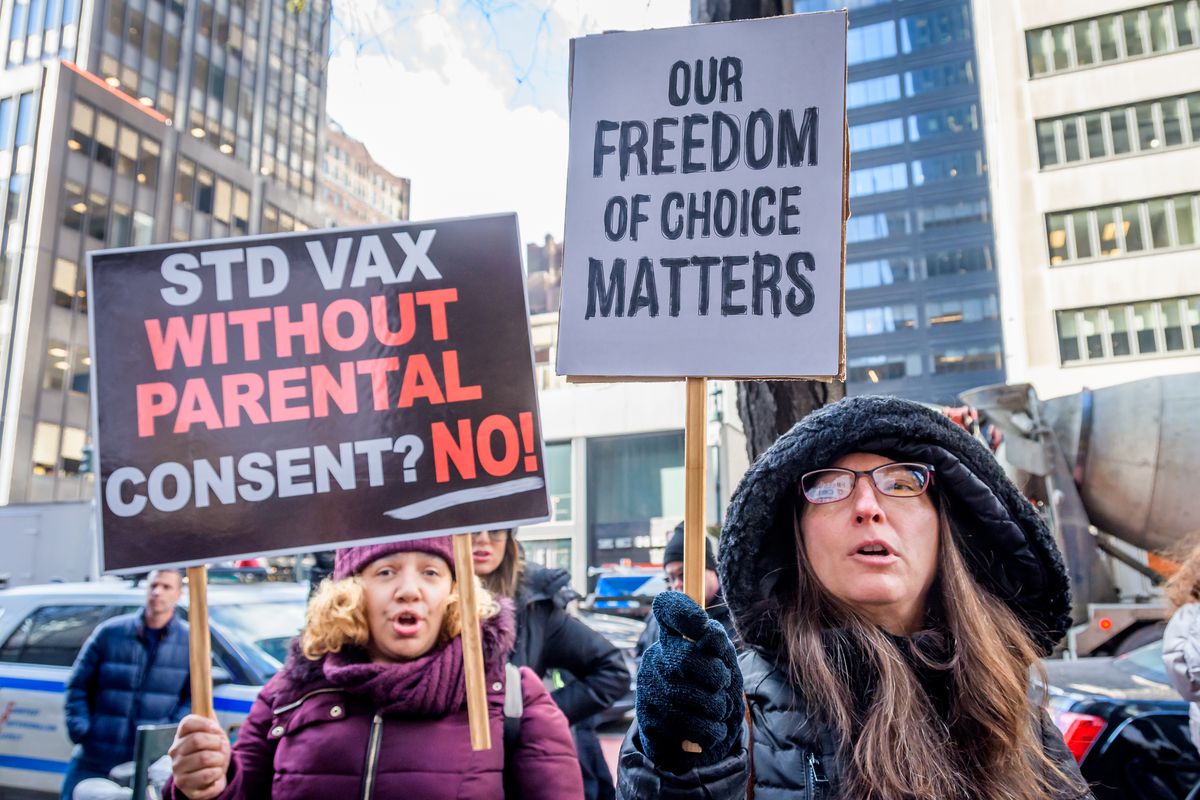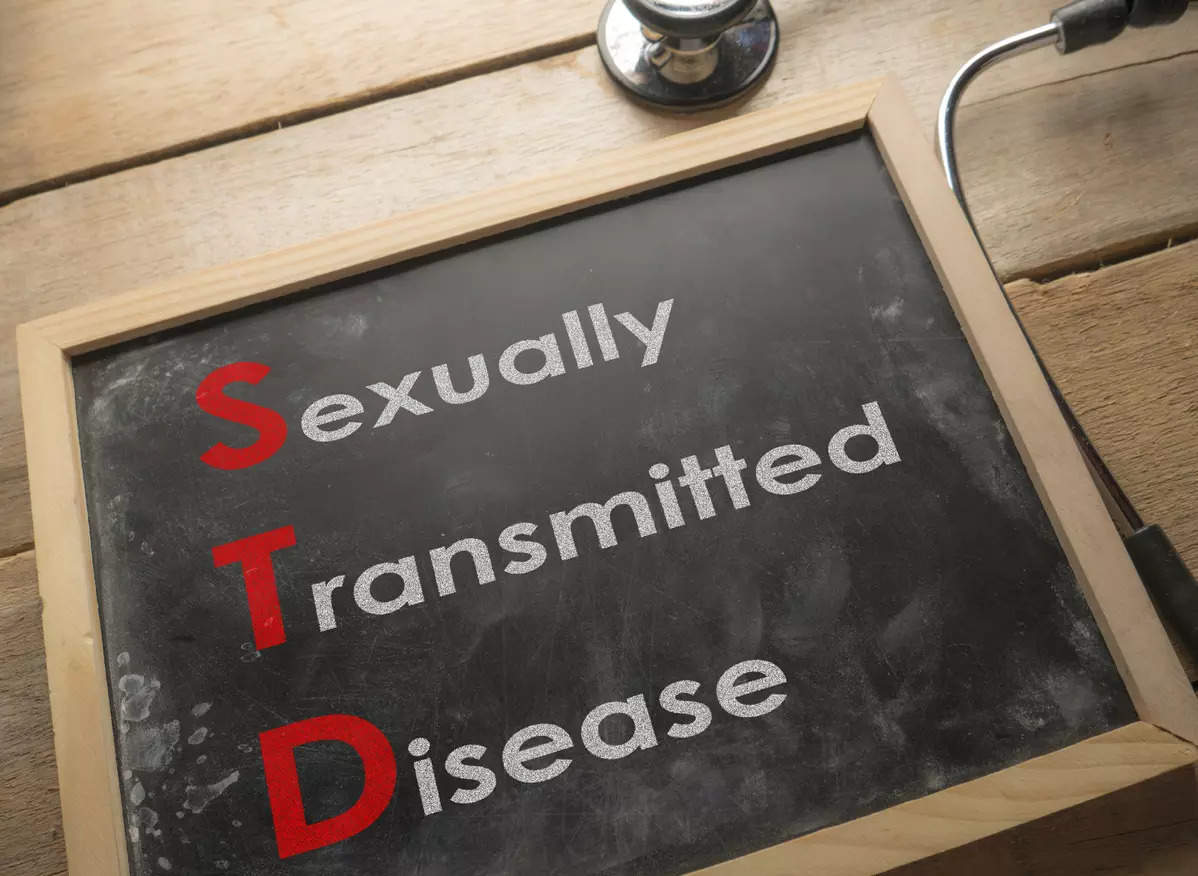Vaccines save lives like no other single health intervention, preventing millions of deaths every year. And that makes it all the more confounding that vaccine hesitancy, with all of its negative public health repercussions, has moved to the forefront of American society over the last three years. About a quarter of American adults say they won’t get the Covid-19 vaccine, according to one recent study, and experts fear that Covid vaccine skepticism could spread to other shots.
The good news is that Americans have quashed vaccine apprehension before — and we did it not by dismissing vaccine deniers, but by taking their fears seriously. Nothing shows the arc of success better than one of the US’s last major vaccine controversies: the human papillomavirus (HPV) shot, which can prevent both the sexually transmitted disease and multiple forms of deadly cancer that the virus can cause.
In 2005, a year before the HPV vaccine became available, there were an estimated 20 million people living with the virus in the United States. In the same year, 10,370 people were diagnosed with cervical cancer and 3,710 people died from cervical cancer. Even today in the United States, around 13 million people are infected annually with HPV, and one in 10 women infected are at risk of cervical cancer.
When it was introduced in 2006, the HPV shots held out the hope that widespread vaccination of adolescents — before they were infected with the virus — could drastically reduce connected cancer rates. Despite that, parents were initially apprehensive about immunizing their children, an uneasiness that largely stemmed from the idea of their kids having sex as well as concerns over the shots’ long-term side effects.
But healthcare workers were able to address these concerns by generally talking parents through their anxieties. They also homed in on the long-term benefit of preventing cancer, which hugely overwhelms any of the vaccine’s possible side effects. As a result of these efforts, cervical cancer rates among vaccinated girls and young women have decreased by nearly 90 percent since 2006, potentially saving thousands of lives.
Yet now, rising levels of unfounded vaccine hesitancy — fears that immunizations cause autism or contain microchips — are threatening one of the most successful health interventions of the 21st century.
“Back when we first started giving this HPV vaccine, people had legitimate concerns about vaccines, and there was a very tiny fringe of people who were coming up with the crazy stuff,” said Jill Foster, the division director for pediatric infectious diseases at the University of Minnesota Medical School. “Now, that has really become mainstream. This idea has entered the zeitgeist of America.”
Even though the theories driving vaccine hesitancy have evolved, the tactics to combat it have not. To overcome the new wave of vaccine hesitancy, whether around HPV or other shots, public health leaders will have to double down on the efforts they took in 2006: working with healthcare providers, religious leaders, and school officials to help people understand the need and urgency of the HPV vaccine. Speaking to patients with empathy and patience was key to helping anxious parents overcome their hesitations around the shots a decade ago, and it could be key once more.
The HPV vaccine success story of the 2010s
In the US, HPV is the most common sexually transmitted infection. In the United Kingdom, an estimated eight in 10 people will contract HPV in their lifetime. In the Caribbean and Eastern Africa, those rates are even higher.
Despite its prevalence, HPV is still largely misunderstood by the public. While most of those infected will not experience visible symptoms like genital warts, they can still unknowingly infect sexual partners — infections that can still later cause cancer. HPV can lay dormant for years, and since men are not screened for the disease as women routinely are during gynecological visits (there is no approved, reliable test for men), it can be difficult to trace the transmission of the virus.
The high-risk strains — the ones that cause cancer — travel into parts of our body (like the cervix), stick, and then start changing the cells in that area, said Foster. While 90 percent of HPV infections will go away in six to 18 months, those that stick for the long run are thought to cause over 90 percent of cervical cancer cases. The HPV vaccine — of which there are three available types approved by the Federal Drug Administration — prevents the virus from sticking to healthy cells by teaching the body to produce antibodies that fight off the disease. While the HPV shots protect against most of the highest-risk (cancer-causing) strains of the virus, it does not provide protection against all strains, as there are more than 150. Therefore, in rare cases, vaccinated individuals can still be infected and develop genital warts.
In the US, it’s recommended that children receive the first dose of the vaccine between the ages of 11 to 12, followed by the second dose six to 12 months later. People receiving the first dose between 15 and 26 years old should receive three doses. The cut-off age for the immunization to be significantly effective is 26 because, after this point, many adults will have already been exposed to the virus through sexual activity. However, those up to 45 years old can still request the vaccine in the US.
When the shots were first introduced, there were three primary parental concerns healthcare professionals had to overcome.
The first came from parents who believed the vaccine was unnecessary because their child wasn’t sexually active. But that’s precisely when children need the shots, said Terri Adams, a registered nurse and the division director of immunizations for the Michigan Department of Health and Human Services, because the HPV vaccine is ineffective in preventing cancer for those who are already infected with the virus. Additionally, as with many vaccines, children’s immune response to the HPV vaccine is stronger than that of adults.
The second concern was from parents who believed that vaccinating their child would essentially grant them permission to become sexually active, said Foster. “I think if we had come out with a breast cancer vaccine, everyone would have run to get it,” she said. “But instead, we came out with a vaccine that was about preventing something from a sexually transmitted disease, and it just made people squeamish.”
To counteract these concerns, healthcare professionals had to adjust how they spoke about the shots — emphasizing the vaccine’s ability to prevent cancer, rather than the STD that causes the cancers. “We started having campaigns a little bit differently, we started talking about it as the cancer vaccine,” said Foster. “A lot of it was basically de-emphasizing the sex part of it, and trying to give concrete information to people.”
The final cause for parental hesitancy came from the fact the vaccine was so new, and that the potential long-term side effects weren’t fully known. In the decade and a half since the HPV vaccine became available, researchers found the shots caused primarily minor side effects, such as dizziness, nausea, and headaches. There is no evidence that the HPV vaccine causes more severe side effects, like permanent disability or death.
At first, the CDC recommended only girls, not boys, be vaccinated against HPV. But, in 2011 this recommendation changed, as it became apparent that the boys were often the ones transmitting the disease to the girls.
The parents of these boys questioned why they should give their children a vaccine that prevents an illness they previously thought only affected girls. Healthcare providers explained that HPV can cause cancers other than cervical cancer, such as throat, anal, and penile cancers, that can affect boys as well. As time passed and more data on side effects and symptoms of the vaccine were collected, parents became more willing to accept the unknown risks they believed the shot carried and vaccinate their sons if it meant preventing them from getting cancer.
“It’s not a women’s health issue,” said Samantha Dixon, chief executive of the United Kingdom-based nonprofit Jo’s Cervical Cancer Trust. “It’s human papillomavirus, we can all have human papillomavirus.”
In 2019, protestors held a rally outside Governor Andrew Cuomo’s office in Manhattan to protest proposed legislation that would allow teens to receive the HPV vaccine without parental consent.
Erik McGregor/LightRocket via Getty Images
Covid jabs spur a fresh wave of vaccine hesitancy
The anti-vaccine movement has a long history in the US, one that largely stems from inaccurate research. But in recent years, social media and the internet have turbocharged the distribution of vaccine misinformation.
“Before Covid, there were still people that resisted, but there was a lot more trust in what medical science had to say and the advice they gave,” said Robyn Seamon, a nurse and founder of Appalachian Healthcare Training & Consulting.
In 2019, only 16 percent of adults believed parents, not public schools, should decide whether or not their children are vaccinated against measles, mumps, and rubella, Pew Research found. Public schools in Hawaii, Rhode Island, Virginia, and Washington, DC required students (in the case of Washington, DC only female students) entering grades six or seven to be vaccinated against HPV. As of 2022, according to a Kaiser Family Foundation poll, 28 percent of adults believed parents should be able to make this decision themselves. Compared to other developed countries, the US reports high levels of vaccine hesitancy. In the US, more than 33 percent of parents reported hesitancy around vaccinating their children against Covid-19. In countries such as Italy, Spain, and Singapore only 13 percent to 23 percent of parents expressed similar sentiments.
National HPV vaccination rates among teens remained fairly stable through the pandemic, but Covid-19 politicized immunizations of all sorts and increased the disparity in vaccination rates across geographic areas and communities. In Vermont, a Democrat-leaning state, at least 83 percent of the population is fully vaccinated against Covid-19. Meanwhile, in Mississippi, only 53 percent of the population is fully vaccinated against Covid-19.
Similarly, while HPV vaccinations are less polarizing, the vaccination rates on the West Coast and in the northeast are higher than those in Southern states. As of 2021, only 32.7 percent of adolescents in Mississippi are vaccinated against HPV, compared to 66.7 percent in Vermont.
“Everybody’s scared of having a stranger stick a needle in their arm,” but now people are being encouraged to give into that fear, said Foster. From a measles outbreak in Ohio to the detection of polio in New York City, “we’re starting to see diseases come back that we had virtually eliminated,” she added.
Covid-19 lockdowns also disrupted immunization schedules. Even after lockdowns lifted, many people feared going to the doctor’s office for something like routine vaccinations and getting infected with Covid-19. In response, the CDC in January launched the Routine Immunizations on Schedule for Everyone (RISE) campaign to improve access to and the affordability of vaccines.
In some low-income or rural communities, receiving any form of medical care, even prior to the pandemic, was difficult. Parents who want themselves or their children to get the HPV immunization may face challenges in actually receiving the shots, since they require multiple medical visits. Lack of transportation to doctors’ offices and pharmacies also complicate efforts to get vaccinated, said Seamon.
“Cervical cancer is a disease of inequality,” said Dixon. Those who live in the most deprived communities in England are twice as likely to die from cervical cancer as those who live in the least deprived, she added.
How to replicate immunization success
As more people return for their regularly scheduled check-ups, it provides an opportunity for medical experts to talk through questions about vaccines, including the HPV shots.
“We have to get down to the individual level, talking to people one-on-one on their first visits, asking, ‘what are your ideas about vaccination,’” said Foster. “Most people coming to us want our expertise, and they just needed to be talked with about what their fears are. Rattling off a bunch of statistics isn’t going to help someone, but talking on a case-by-case basis will.”
However, sometimes, it isn’t the healthcare provider who should be having these discussions, said Seamon. Instead, especially in marginalized communities, healthcare providers should identify trusted members of the community who can speak to their experiences and personal reasons for receiving the HPV vaccine, she added.
This could entail working with faith leaders or local public officials to advocate for vaccinations and talk through concerns. In rural communities, such as Appalachia, where Seamon trains healthcare professionals on how to communicate with vaccine-hesitant populations, there is a lot of warranted mistrust in the government.
Especially given mistaken concerns that the HPV vaccines would promote adolescent sex, the faith community could be vital in increasing immunization efforts, research found. In 2007, the Catholic Medical Association, an organization of Catholic medical practitioners, published a position paper on the subject of the HPV vaccination. The paper stated that although HPV is primarily spread via sexual contact that “does not render vaccination against it unethical.”
“Traditional health communication is very statistical,” Seamon said. “A lot of people can’t relate to that, but they can relate to a member of their community telling them about how they were scared to receive the vaccine, but they did it, and they’re better off for it.”
These same tactics from the late 2000s can work to dispel vaccine hesitancy today. The web of vaccine misinformation online and on social media adds to the challenge of convincing misinformed patients to vaccinate themselves and their children, but as we now know, it’s not an impossible task.
Yes, I’ll give $120/year
Yes, I’ll give $120/year
We accept credit card, Apple Pay, and
Google Pay. You can also contribute via

Discovered on: 2023-03-04 13:00:00
Source: The HPV shot protected a generation from cancer and beat vax hesitancy



